Dishwasher: Why won't my dishwasher drain?
If water pools in the bottom of the dishwasher after the cycle ends, here are possible causes to check.
A clog in the flow path
A clogged sink drain won't allow water to drain from the dishwasher. If there's no clog, try pressing the Cancel button; most dishwashers run the drain pump when the Cancel button is pressed.
If the kitchen sink drain is clear, check the drain hose for clog. Our dishwasher not draining video shows how to check the drain hose. On some dishwashers, water flows to the drain pump through the upper sump assembly. A clog in the upper pump assembly can prevent water from reaching the drain pump. Check the upper sump assembly for a clog and clear any debris that blocks drain water flow.
Some dishwashers have a chopper blade that shreds debris as the circulation pump runs. The chopper blade sometimes fails to break up large debris and some items such as jar labels and glass. When the chopper blade area gets clogged with debris, water may not reach the drain pump so the dishwasher won't drain out the water. Check the chopper blade area and clear any debris from that area of the sump.
A malfunctioning check valve
The drain hose on many dishwashers includes a check valve that prevents water from backing up into the dishwasher sump through the drain hose. You might find the check valve in the upper sump assembly or next to the chopper blade assembly.
If the check valve is damaged, water may initially drain out of the dishwasher while the drain pump runs but then flow back into the dishwasher after the drain pump stops. Examine the check valve and replace it if it's damaged.
A failed dishwasher drain pump
A failed drain pump can prevent the dishwasher from draining.
Follow these tips to know if your dishwasher drain pump is bad:
Press the Cancel button on your dishwasher. The drain pump runs when you press the cancel button on most dishwasher models. If your dishwasher has a timer, turn the timer dial to the drain portion of the cycle to run the drain pump.
Listen for the drain pump running. If the drain pump runs but doesn't pump water and the drain path is clear, then the drain pump is likely bad.
If the drain pump doesn't run, unplug the dishwasher and check the drain pump wiring connections. If the drain pump wiring connections are okay, then the drain pump is likely bad because its motor isn't running even though it's getting electrical current through its wires.
If the drain pump doesn't run or doesn't pump out water when activated, replace the drain pump.
Some dishwashers use the same pump to circulate water through the spray arms and drain the dishwasher. The pump runs one direction to move water through the spray arms and the opposite direction to drain the water. If the pump doesn't run in the drain direction when activated, replace the pump assembly.
A malfunctioning control or timer
If the timer or electronic control doesn't activate the drain pump during the drain portion of the cycle, replace the control device.

THESE REPAIRS MAY HELP SOLVE YOUR DISHWASHER PROBLEM
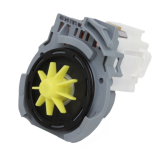
Replace the dishwasher drain pump
Replace the dishwasher drain pump if it's cracked or damaged, or if the drain pump doesn't pump out water. Before replacing, check the drain path (drain hose, sink drain and sump) to make sure it's not blocked. If the drain path is clear and water doesn't pump out, the drain pump has failed. Replace the drain pump if it won't run even though it's getting run voltage from the timer or control board.
Dishwasher drain pump
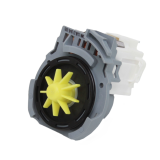
How to replace a dishwasher drain pump
If the dishwasher doesn’t drain, the problem could be the drain pump, even if you hear the pump running. You can replace the pump in about 30 minutes, following the steps in this repair guide and video.
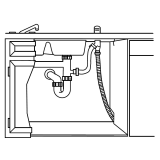
Clean the dishwasher drain path
The drain path (sump, pump, drain hose, air gap if installed and sink drain) can sometimes become clogged with debris or grease. In this situation, the drain pump will run but the water won't be evacuated. The drain path will need to examined and cleared to fix this type of dishwasher problem. If the drain line is damaged or cannot be cleared, then it will need to be replaced.
Clean the dishwasher drain path
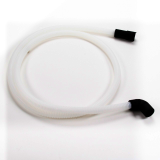
Replace the dishwasher drain line
Replace the drain line--also called the drain hose--if it develops a hole or tear. Holes in the drain hose cause the dishwasher to leak, especially when the dishwasher is draining.
Dishwasher drain line
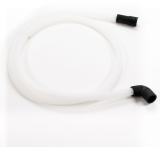
How to replace a dishwasher drain hose
Water leaking from under a dishwasher could mean the drain hose cracked or split. This step-by-step DIY repair guide shows you how to replace a leaking drain hose.
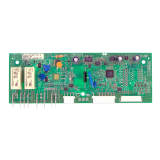
Replace the dishwasher electronic control board
The electronic control board runs all dishwasher functions. If the electronic control board is getting voltage, but not operating properly, it should be replaced.
Dishwasher electronic control board
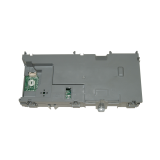
How to replace a dishwasher electronic control board
Because the dishwasher electronic control board runs every stage of the dishwashing cycle, it's hard to know if the problem is the board or something it controls. If you or a repair technician determines the dishwasher electronic control board is faulty, this repair guide and video show how to install a new one.
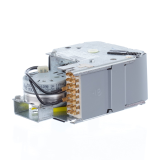
Replace the dishwasher timer
The timer controls the electro-mechanical components in the dishwasher such as the wash pump, drain pump, inlet water valve and heating element. The timer also advances the control knob on the control panel. Replace the timer if it fails to start and stop the components properly or fails to advance the control knob.
Dishwasher timer
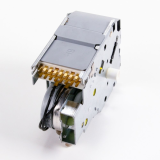
How to replace a dishwasher timer
If a dishwasher isn't advancing through the wash, rinse, drain or dry cycles, chances are the dishwasher timer is to blame. This easy-to-follow repair guide shows you how to safely complet dishwasher timer replacement yourself.
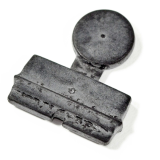
Replace the dishwasher check valve
Most drain systems in the dishwashers have a check valve that prevents the drain water from backing up or siphoning back into the sump of the dishwasher after the normal drain process is completed. If the dishwasher isn't draining properly, or drain water is backing up into the sump after the drain process, then you will need to clear or replace the check valve.
Dishwasher check valve
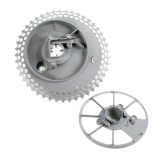
Clear the dishwasher chopper blade area
A kernel of popcorn or a similar foreign object can drop into the chopper blade area of the dishwasher, causing a loud grinding noise when the pump runs. Remove the lower spray arm and the upper part of the dishwasher sump to access and clear debris from the chopper blade area. If the chopper blade is damaged, replace it.
Clear the dishwasher chopper blade area
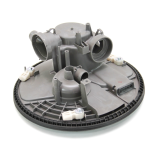
Repair the dishwasher upper circulation pump assembly
Some dishwashers have a portion of the circulation pump assembly that can be accessed and repaired from inside the dishwasher tub (from the top of the circulation pump assembly). A clog, a foreign object or a failed seal can prevent the water from flowing to the spray arms. A clog or failed check valve can prevent the dishwasher from draining. Remove the lower spray arm and the top of the sump to inspect the upper circulation pump when spray is weak or the dishwasher won't drain. Clear any clogs and replace any damaged parts to restore water flow to the spray arms or drain pump.
Repair the dishwasher upper circulation pump assembly
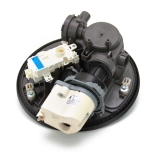
Replace the dishwasher circulation pump and motor assembly
Several situations can require the replacing the circulation pump and motor assembly in a dishwasher. If the motor on the circulation pump fails, then the dishwasher pump won't run at all. Sometimes the motor runs but doesn't generate water pressure through the spray arms, because the damaged impeller or pump housing is damaged. The pump housing and/or the seals could also deteriorate or become damaged, causing the dishwasher to leak. Problems inside the pump and motor assembly can create abnormal noises in the dishwasher. In all these situations, the pump and motor usually must be replaced.
Dishwasher circulation pump and motor assembly
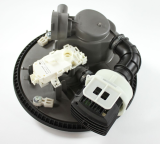
How to replace a dishwasher circulation pump and motor assembly
When the dishwasher spray arm won't spray, the problem could be the circulation pump or the pump motor. Installing a new dishwasher circulation pump and motor assembly costs about as much as just replacing the motor, and is easier. This DIY repair guide with video shows how to replace a dishwasher circulation pump that's not working.
Most common symptoms to help you fix your dishwashers
Choose a symptom to see related dishwasher repairs.
Main causes: broken door spring, damaged or broken door hinge…
Main causes: damaged or stuck spray arm, leaking door seal, damaged door hinge, leaky heating element water seal, cracke…
Main causes: broken door latch, tripped circuit breaker, broken heating element, faulty vent fan, sensor failure, contro…
Main causes: improper loading, low water temperature, improper detergent dosage, detergent dispenser failure, spray arm …
Main causes: clogged kitchen sink drain, clogged drain hose, drain check valve damaged, drain pump failure, control syst…
Main cause: damaged rack height adjuster…
Main causes: glass or popcorn kernel stuck in the chopper blade, drain line vibrating against the cabinet, debris in was…
Main causes: not using rinse aid, rinse aid dispenser failure, broken heating element, malfunctioning vent, drying fan f…
Main causes: light switch beside the sink turned off, lack of power, bad dishwasher door switch, control system failure,…
Most common repair guides to help fix your dishwashers
These step-by-step repair guides will help you safely fix what’s broken on your dishwasher.

How to replace a dishwasher water inlet valve
If your dishwasher fills constantly or won't fill at all, the water inlet valve has failed. You can replace it in about …
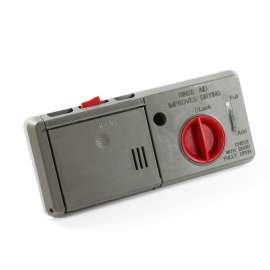
How to replace a dishwasher detergent dispenser
Dishes need dish detergent to get clean. Learn how to replace a dishwasher detergent dispenser with easy step-by-step i…
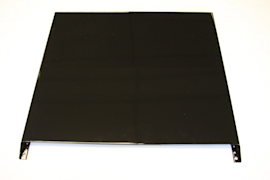
How to replace a dishwasher door outer panel
If your dishwasher door is dented or you want it to match your cabinets or other appliances, this guide shows how to rep…
Effective articles & videos to help repair your dishwashers
Use the advice and tips in these articles and videos to get the most out of your dishwasher.

Get tips on completing essential holiday cleaning tasks to brighten your home.…
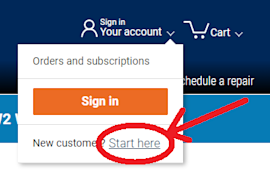
Learn about all the convenient features on our Sears PartsDirect website that make your parts purchases easier.…
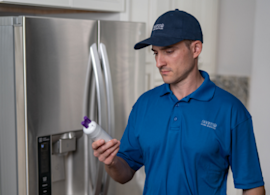
Get answers to frequently asked questions about Sears and Sears PartsDirect.…
